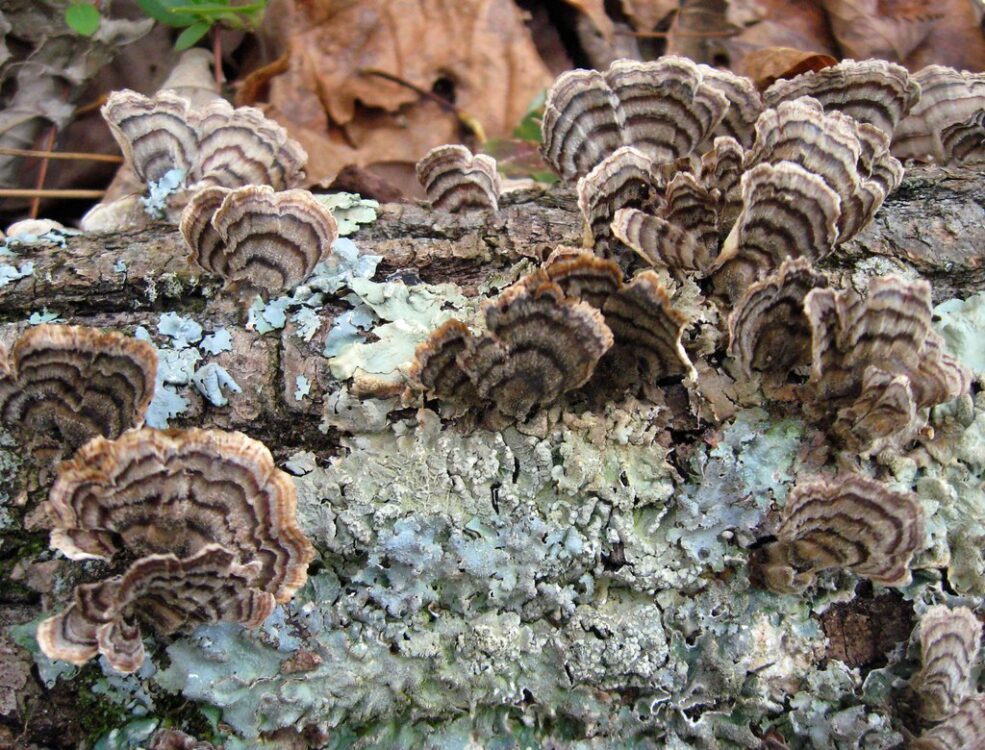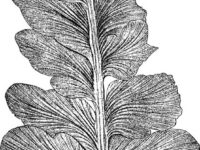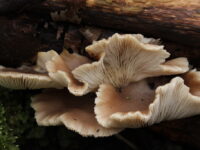Think mushrooms. Other than juicy, beefless patty substitutes sizzling on a grill, your first thoughts may have ventured to vivid, orange blooms sprouting out of rotting tree trunks. Fungi — even the term evokes vague revulsion or apprehension — are synonymous with rot and decay. They are harbingers of death, macabre forest floor scavengers who colonize corpses and thrive on their flesh.
Popular science fiction like “The Last of Us” and “Star Trek: Discovery” has introduced mycelium and fungi into the public lexicon; however, fungi already hold unfathomably far-reaching roles both ecologically and culturally around the world.
Mushrooms are only the fruiting bodies of fungi. Neither plant nor animal, fungi claim the third, massively complex branch of eukaryote. They were the first terrestrial colonizers, extracting mineral content from rocks to create soil. Fungi merged with liverworts, the most ancient land plant, into a singular symbiotic life form, laying the foundation for the first terrestrial plants to take root and birth complex ecosystems.
Mushrooms such as the pithy brown lingzhi are prized in East Asian traditional medicine for innumerable health benefits from lowering inflammation to slowing tumor development. Dedicated foragers in eastern Ukrainian forests are literally risking life and limb to continue the beloved Eastern European winter mushroom hunt.
Eons before humans existed, the first agricultural society farmed fungus. For 50 million years, leafcutter ants have marched through rainforests carrying serrated leaf slices. These leaves are not colony provisions, but Lepiotaceae feed. The fungus produces antibiotics that protect against common microbial infections in the Amazon basin, while the ants provide meticulously clean gardens free of pests and debris.
The largest organism on Earth is not the blue whale nor elephant, but a singular fungus encompassing 1,665 football fields in eastern Oregon. Via DNA fingerprinting and other gene identification techniques, Armillaria gallica, affectionately known as the “humongous fungus,” has been identified as one individual ranging from 2,400 to 8,600 years old — also making it likely the oldest contiguous organism. The fungus differentiates along tree roots via hyphae, silvery filaments, which form mats that emit digestive enzymes for the fungus to feed and colonize simultaneously. This network is known as mycelium and allows entire ecosystems to exchange and reallocate resources and information.
Forests are not just loose collections of plants and fungi. Mycorrhizal networks act as the “wood-wide web,” connected by cables of mycelial threads stretching for kilometers beneath the forest floor. Since the ‘90s, researchers have identified mycorrhizal symbiosis within plant root cells — in exchange for revitalizing nutrient-poor soil with minerals and secreting antibiotics, the plants provide sugars and housing for the fungi. By tracking carbon isotopes moving throughout this system, we know this interaction extends beyond individuals and even neighboring plants. Bridged by mycelium, entire forest ecosystems are chemically linked in the exchange of resources into a sort of symbiotic super-organism. Not all is harmonious, however. Neighbors favor nearby relatives and wage war — rerouting nutrients or emitting toxins via mycelium to destroy parasites or rivals.
“Fungi are beautiful. They thrive on death, and life is reborn.”
This diversity of fungal abilities has strong ramifications for science and society today. Mycelium’s versatility makes it a sustainable biomaterial. Biodegradable, durable, and lightweight mycelium shoes, bricks, and houses are now on the market. Easily grown from food scraps with minimal facilities, mycelium is cheap and can be grown into most structures with molds. We can also harness fungi’s most familiar ability — degradation. From polyurethane to oil spills to radioactive waste, there is likely a species (or bioengineered existing strain) that will eagerly consume our debris. With armories of digestive enzymes like catalases and lipases, fungi provide environmentally benign detoxification pathways to previously incalcitrant toxins like tanning byproducts or heavy metals. Despite expanding genomic analysis and protein engineering efforts, the endlessly diverse family of approximately 3.8 million fungi species remains widely undiscovered.
Unpopular opinion — fungi are beautiful. They thrive on death, and life is reborn. Embracing the circular lifestyle of the fungus may inspire us to clean up our messes and look toward a cleaner future. Opening our eyes to the diversity and immense range of fungal abilities may produce the solutions to our problems right below our feet.






